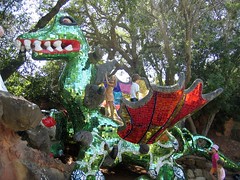Tarot – a Brief Introduction
TAROT – a brief introduction
The Tarot has many myths, mysteries and misconceptions associated with it and it is often regarded with suspicion. It is one of the most enigmatic systems of divination and prediction and has fascinated all who have come into contact with it for hundreds of years. No one really knows for certain how or when the Tarot began as its origins remain shrouded in mystery although the general opinion is that it originated in the 15th Century in Northern Italy. Since then, Tarot cards have been used for gaming, fortune-telling, meditation, psychological insight, ritual, creative inspiration and healing.
These days, the Tarot Reader is much less likely to use the Tarot as a ‘fortune telling’ device and more likely to use it for advice, guidance, empowerment and enlightenment both for others and her/himself. I believe that the future is not set in stone or predestined as our free will and the decisions and choices we make can change the direction in which we are travelling. The Tarot can help us to make these decisions and choices by showing us options that we may not have considered before. Sometimes we can be so involved in a situation that we cannot see the way forward.
The Tarot does not take away our free will or ability to make choices for our self and does not predict a fixed, unchanging future. It is best to consider a Tarot reading as advice and guidance.
A standard Tarot deck consists of 78 cards depicting scenes, symbols and images which can seem mysterious, curious, fascinating, disturbing or even amusing. There are 22 cards in the Major Arcana (Arcana means secrets) and 56 cards in the Minor Arcana. Each card of the Major
Pages: 1 2
